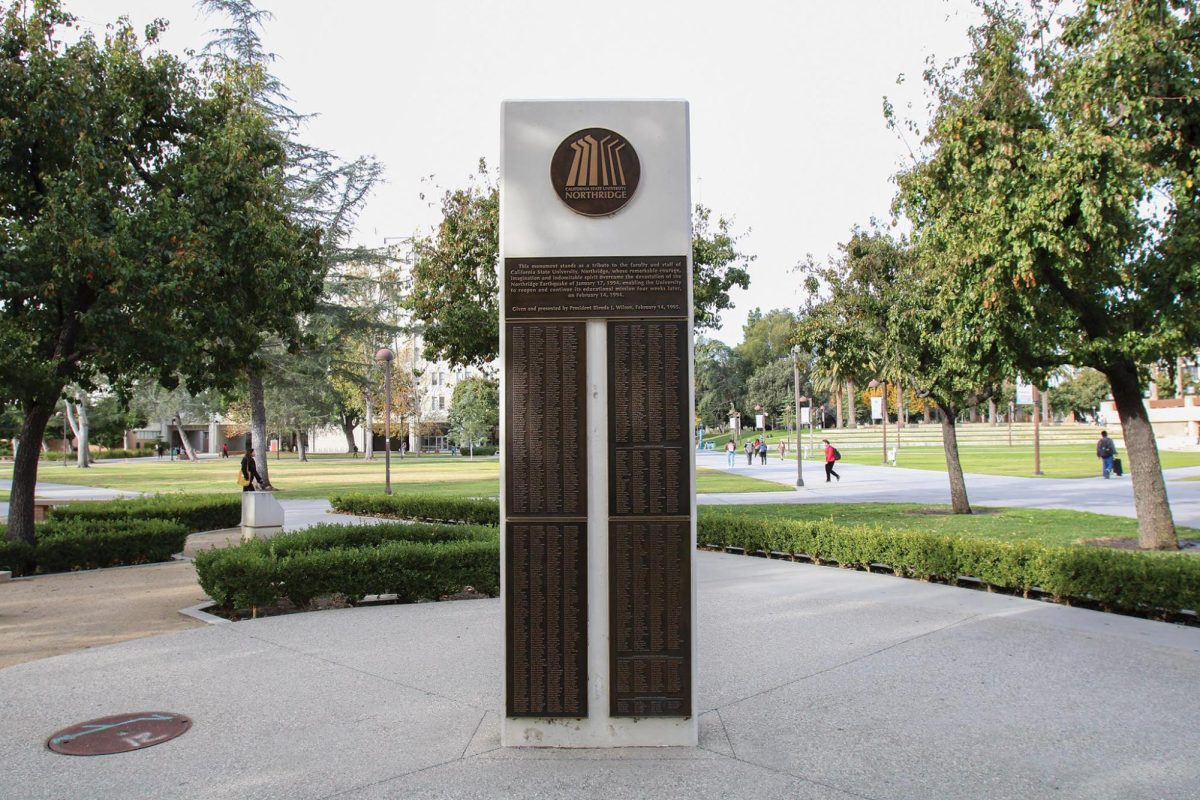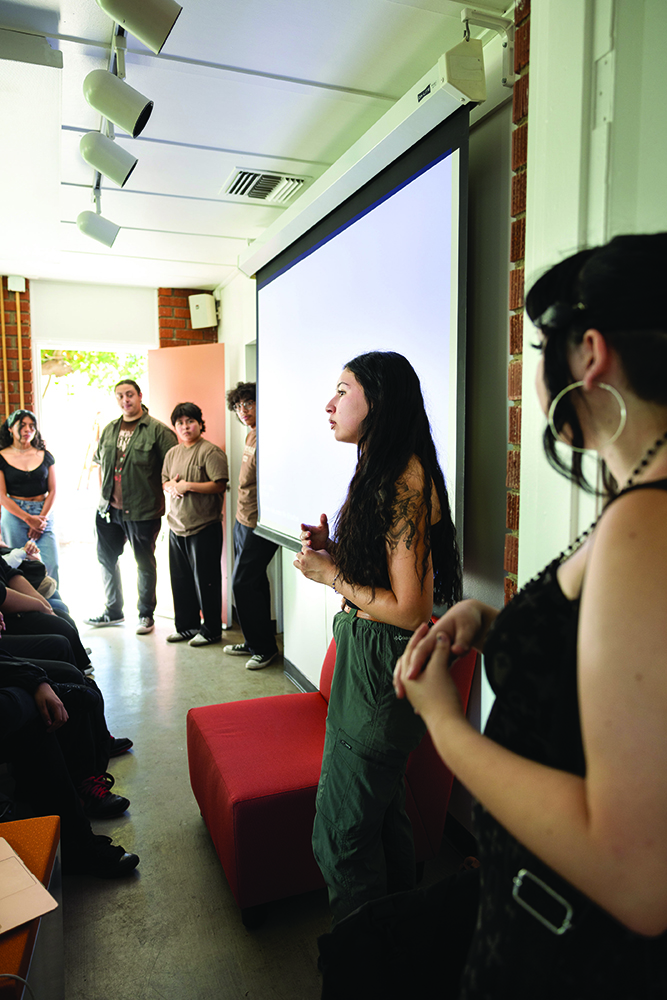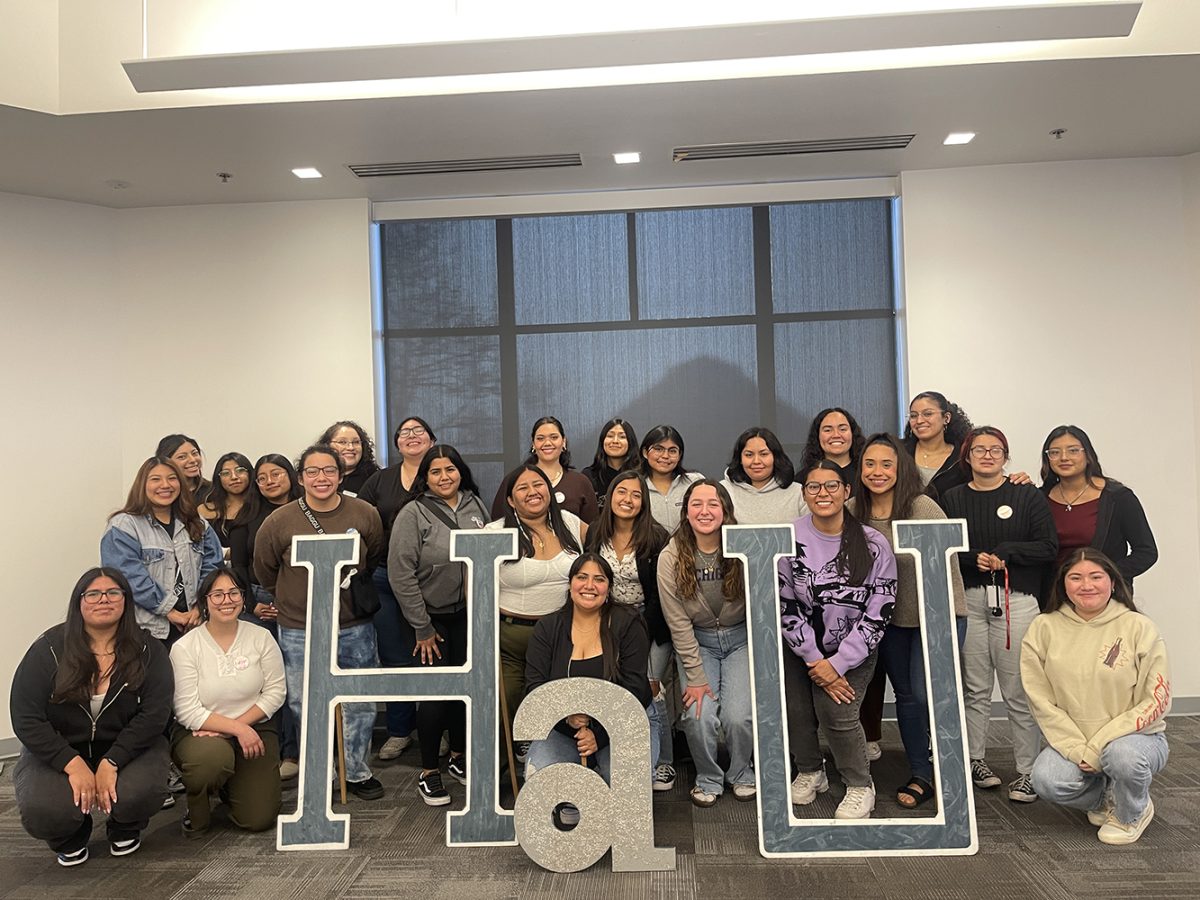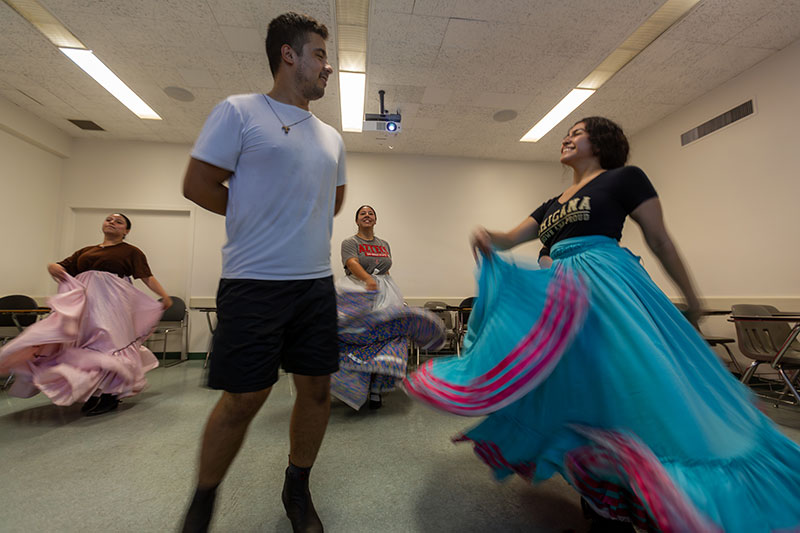While most students currently attending California State University, Northridge, are not old enough to remember the 1994 earthquake, there are a few locations where the quake and the people who dedicated themselves to rebuilding the campus in its aftermath are memorialized, such as the Lauretta Wasserstein Earthquake Sculpture Garden.
Before sunrise on Jan. 17, 1994, a 6.7 magnitude earthquake violently shook Northridge and the surrounding areas, claiming the lives of at least 57 people and injuring about 9,000 others. Because the earthquake struck early in the morning, very few people were on campus, which minimized potential injuries and fatalities. Two of the fatalities, though, were CSUN students Jaime Reyes and Manuel Sandoval, who were roommates at the Northridge Meadows Apartments.
Many buildings and streets across the San Fernando Valley suffered heavy damage. Infrastructure that was not built to endure earthquakes of such magnitude collapsed, streets caved in, exposing dangerous gas pipes, and even parts of Interstate 10 Freeway. In total, around $20 billion were spent on damage repairs following the quake.
CSUN was not left untouched by the earthquake, as the campus itself sustained damage as well. Some of the most notable pictures of the earthquake are of the University Library, as much of the overhanging roof had collapsed to the floor outside. While the main body of the library endured the earthquake, two wings were so badly damaged that they had to be demolished and rebuilt.
Other structures weren’t so lucky. An entire parking structure on Zelzah Avenue built two years prior collapsed in on itself as a result of the numerous aftershocks that followed the earthquake.
The estimated $400 million of damages to CSUN were so extensive that reconstruction of the campus did not officially conclude until 2007.
Despite the damage to the campus, CSUN has endured long after the Northridge earthquake. However, even 30 years later the quake’s impact can still be felt across the San Fernando Valley and CSUN.
Located near the intersection of Lindley Avenue and the Mike Curb College Arts Walk, the Lauretta Wasserstein Sculpture Garden – also known as the Earthquake Garden – was made in remembrance of the massive quake that shook the campus to its core.
Originally erected in 2003, the Earthquake Garden was a collaborative effort between artist Margy Sievers and landscape architect Paul Lewis. It was named in honor of CSUN health science professor, Lauretta Wasserstein, who passed away a decade prior.
The gardens consist of numerous structures fashioned from rubble left over from some of the damaged buildings. One titled Column Under Pressure is a large bent pillar from the toppled parking structure that juts out of the ground and leans against a rock as a form of support.
Further back, a smaller pillar with exposed, mangled rebar sits at the start of a small, uneven path that leads to the central portion of the garden. This pillar is adorned with a plaque, bearing the garden’s namesake and all those who contributed to its construction.
Even some items present at the garden meant for student leisure and rest were originally debris as well, such as the two Rubble Benches. One features a large crack in its center, revealing its innards. The other is a more intact piece, tagged with bright red graffiti.
While every structure in the garden contains symbolic references to the Northridge earthquake, not all of them are recycled pieces of campus wreckage. The largest art piece in the garden, Seismic Rings, is located at the center. This structure consists of six rings that grow in size as they get farther from their epicenter, a visual allusion to the 6.7 magnitude earthquake.
In a 2003 article written for Community@CSUN, Sievers shared that while her house was destroyed by the earthquake, she was quick to start painting and photographing the damage left in the wake of the incident. It was when she saw the damage at CSUN that the initial idea for what would become the garden took root.
“In the destruction and contorted and bent structures were shapes and forms that reflected elements of beauty,” Sievers was quoted in the article.
While it might be the most iconic art piece on campus related to the event, the Earthquake Garden is not the only monument erected as a result of the quake. Near the Sierra Quad and Magnolia Hall are two permanent installations; one was erected in 1995 and was dedicated to the hundreds of faculty and staff members who helped deal with the quake’s aftermath and got the campus reopened to the public within a month.
The other is a courtyard with a plaque commemorating former CSUN president Blenda Wilson, who oversaw the university while it was under reconstruction. The courtyard was dedicated to Wilson in 2014, 20 years after the earthquake.
While CSUN has long since recovered from the earthquake, the memory of it is instilled for anyone to come and see.




